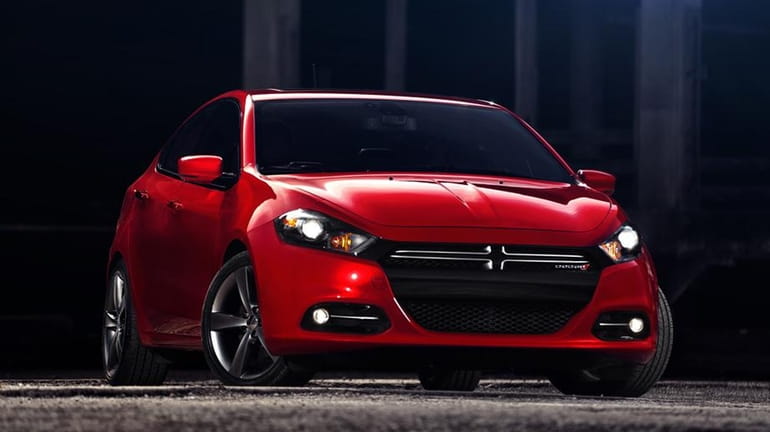Resale value is no higher in cars with fuel-efficient extras

The 2013 Dodge Dart has an Aero trim that adds to the vehicle's fuel efficiency. But don't expect it to add resale value. Credit: Dodge
Fuel-economy packages are multiplying these days, and it seems every automaker has one. They do beef up mileage claims after all. Dodge makes the Dart Aero, Nissan offers a Sentra FE+ and Ford has its Super Fuel Economy packages. Most of them do the same thing: aerodynamic enhancements, more efficient tires, perhaps some tweaked mechanical bits -- all in the name of eking out an extra mpg or two.
The packages often cost hundreds of dollars, and the annual fuel savings are scant. But in an era of gas prices skirting $4 a gallon each summer, can a fuel-economy package add resale value down the road?
The short answer: no. But it's slightly more complicated than that.
For one, data is hard to come by because automakers sell so few new cars with these packages. Of the 2,700-plus used Ford Fiestas listed in Cars.com's national inventory, just six include an SFE designation. And of the nearly 6,000 examples of the current-generation Ford Focus, just 13 are tagged as SFEs.
Moreover, residuals calculators like ALG don't list resale projections for such packages because they don't constitute a separate trim level. But when an automaker does split an efficient version into its own trim, the results don't favor higher resale values. The 2012 Honda Civic's more-efficient HF adds 1 mpg in combined city/highway EPA mileage versus a similarly equipped Civic LX. ALG projects the HF to hold 40 percent of its value after five years' ownership, which is the same percentage as the LX.
Similarly, ALG pegs the stick-shift 2011 Chevrolet Cruze Eco, which ekes out an EPA-estimated 42 mpg versus mid-30s for the regular Cruze, to retain 32 percent of its value after five years. That's the same as a similarly equipped Cruze 1LT.
Michael Cooperman, ALG's director of marketing and public relations, sees dim prospects for getting much resale value back.
"In general, it looks like the residuals for the high-efficiency models are about a [percentage] point lower than the standard engine models," Cooperman told Cars.com. "This is primarily the result of the price premium charged versus the actual value."
In many cases, the "actual value" translates to slim annual fuel savings. In the Civic HF's case, it's less than $50 per year on 15,000 annual miles at $3.50 a gallon. You're likely to see all three of the next "Star Wars" installments before recouping the HF's $800 premium versus an automatic Civic LX.
Sell the car before then and you may not get much extra -- if any. Take the Kia Forte. It offered a short-lived fuel-economy package in 2010 that swapped out the car's four-speed automatic for a five-speed, plus various aerodynamic and mechanical tweaks. It ran $600 on the Forte EX sedan. Today, non-certified listings with the fuel-economy package average $13,069 in Cars.com's national inventory. That's $238 less than similarly equipped 2010 Forte EX sedans without the package. Samples are small -- there were just over 100 cars between the two groups -- but the listings suggest, at minimum, that the fuel-economy package may add no resale value whatsoever.
Why? Perhaps the pace of technology is to blame. Most redesigned cars leapfrog their predecessors' gas mileage, even with the fuel-economy package. Mileage is a moving target and that makes fuel-economy packages a little like navigation systems or stereo upgrades: costly up front and dated down the road. Used-car shoppers don't have new-car Monroney stickers spelling out the fuel-economy gains, either, so selling them on EPA ratings from years back -- and, in most cases, only small annual gas savings -- might not be easy.
Of course, gas prices may change all of that. As of this writing, the national average for a gallon of regular runs less than $3.30. That's more than a 50-cent decrease over September 2012's highs. Should the national average break $4 a gallon again, used-car shoppers may clamor for anything that gets better mileage, and fuel-efficiency packages may temporarily fetch higher prices.
If you bought such a car, look to sell it when pump prices peak. But if you're shopping for a new car with the package, it's safe to assume it will fetch little, if any, extra cash down the road.
